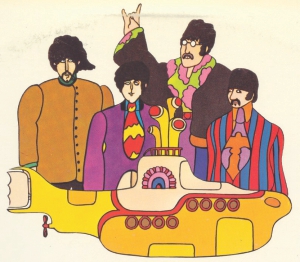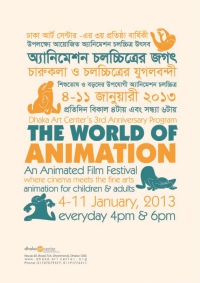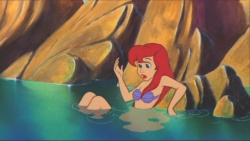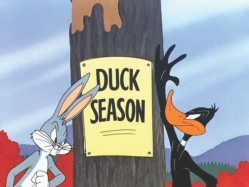| Home - Back Issues - The Team - Contact Us |
 |
| Volume 12 |Issue 02| January 11, 2013 | |
|
|
Film
The World of Animation Soraya Auer
Almost everyone's first experience with animation is in childhood. It is a world where fluffy animals are perfectly able to talk, survive 1,000 ft drops, walk around naked without their privates showing and generally bend the rules of reality. For a select few, the love of animation survives to adulthood and they become the animators of the future, using their imagination and creative talent for the pleasure of the next generation. In an attempt to encourage the animators and future animators of Bangladesh, The Dhaka Art Center, to mark its third anniversary, has been hosting 'The World of Animation', an Animation Film Festival, for the past week. “We're trying to show a wider variety of animation as much as possible to cater to all tastes but we're specifically hoping to get artists interested in cinema and children interested in the arts and in the Dhaka Arts Center,” says Shoumik Hassin, the Festival Programmer. With an afternoon screening suitable for children and an outdoor evening screening suitable for teenagers and adults, the eight-day festival has drawn interest from a variety of people young and old, poor and rich. “I usually sit in Rabindra Sharbar with my friends in the evenings and the sound of these films got me curious to come check it out,” says Ashfaq Rahman, a college student, as he sips tea from a plastic cup. “It's not bad,” he comments, as the short films from the National Film Board of Canada illuminate the large screen in Dhaka Art Center's courtyard. He says, “A couple are a little slow and boring but there was one good one which was a stick man animation.” Ashfaq is referring to 'Keith Reynolds Can't Make It Tonight', a six-minute short film, about a man arriving at his work place in the hope of a promotion after dedicating eight years to the company. A series of deaths occur but what is particularly gripping about the story is not the content, but the snappy way in which the story is told.
Behind the grill of the Dhaka Art Center is Mohammad Hanif, a driver whose employer was in a home nearby. He watches curiously as 'Madame Tutli-Putli' plays on screen. “I don't know what this is. It looks strange,” he comments. “It's not in English or any other language so I can follow the story,” he says. “I quite like it I guess. I know it's a cartoon but it doesn't look very smooth, and the eyes are quite human-like so it's a bit unnerving.” In fact, 'Madam Tutli-Putli' is quite unique in this respect. It is a stop-motion animation which means the puppet or object used was physically manipulated to appear to move on its own. The object is moved in small increments between individually photographed frames, creating the illusion of movement when the series of frames is played as a continuous sequence. The 17-minute short film, which was nominated for an Animated Short Film Oscar in 2008, took more than five years to make and critics lauded the film for its groundbreaking stop-motion animation techniques. Portrait artist Jason Walker created the technique of adding composited human eyes to the stop-motion puppets, which is what Hanif found unnerving. A more famous stop-motion animation featured in this week's festival is that of the absent-minded inventor and his genius canine companion: 'Wallace & Gromit'. This beloved British animation, while suitable and enjoyed by children, is a classic that has appealed to generations and as such, has made it to the big screens of feature-length cinema. The three shorts 'A Grand Day Out', 'The Wrong Trousers' and 'A Close Shave' are just a taste of the series and characters have to offer. Other well-known animated films screened at the festival included 'Coraline' and 'ParaNorman' by Laika Studios. 'Coraline', a 2009 British-American stop-motion 3D horror/fantasy film, is the story of a young girl who finds another set of parents living in her new house and 'ParaNorman', a 2012 American 3D stop-motion animated comedy horror film, is the tale of a young man who can talk to ghosts. Both films were received positively among critics and did very well in the box office. The festival schedule may make many children (and children in adult bodies) drool at the unique selection at hand, but adults with an interest will also be intrigued by the variety of international animation films. “We're trying to get a Bengali audience interested in cinema as a whole,” says the Festival Programmer, Shoumik Hassin. “Aside from the most mainstream animation in the US, and even Japan, which is the second largest animation industry in the world, they [animators] do a lot of work that's targeted more towards adult or at least older audiences.” She explains, “We've actually collected from a major network of animators like in Canadian and British animation and a lot of this is not targeted at children. Children can watch much of it, perhaps not the overtly violent or sexual ones but they can watch a lot of it and enjoy it but there are animations that deal with adult subjects and more mature sensibilities and we've tried to screen many of those alongside children's shows.” She adds, “That's another thing we're trying to build up, which is to expose people to different types of animation.” The festival achieves this goal in many ways with the range of old and new animation films. While the opportunity to see never-been-screened-films in Bangladesh is appreciated, audiences have not always been satisfied. One young boy, as he left the auditorium showing Japanese Studio Ghibi's 'Castle in the Sky' moaned to his father how he didn't like the film and that it had been too long. “I've never liked these types of Japanese cartoons,” says another audience member as he left the premises. However, whether the animations are fully appreciated or not may not be the point. This unique animation festival is giving a Bengali audience the opportunity to see for free the range in style the animation world has to offer. From short films that look like moving paintings to clay dolls or puppets used in stop-motion, no audience member can deny the breadth of the industry. Bengali animation has not featured in the week's programme but the festival organisers explained this was not meant to exclude them but rather because there were no connections made at the time of scheduling the festival. “What ended up happening was, a few Bengali animators came to our festival and we started talking to them and they suggested we show some Bengali animation. So we plan to shorten the showing on Friday 11th [today] and show about an hour of Bengali shorts that will be selected by people in the Bengali animation community and they will be available after the programme for discussion, about Bengali animation, about what they're interested in, how they became interested in it and how to get involved in animation production here.” 'The World of Animation' Animated Film Festival finishes today with a 4pm screening of The Little Mermaid and 6pm screening of the Bitter Films of Don Hertzfeldt and a selection of Bengali animation. It is being held at Dhaka Art Center, House 60, Road 7/A, Dhanmondi, Dhaka.
|
||||||||||||||||
Copyright
(R) thedailystar.net 2013 |




